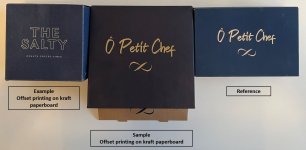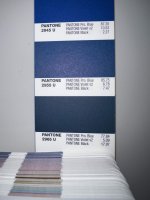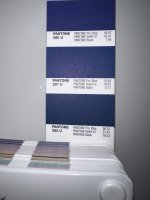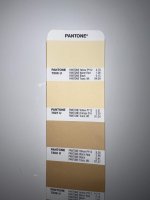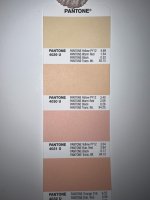Hello!
We did offset printing directly on a brown kraft paper board of 350G with a blue background in pantone 2767C and text on it in pantone 155C (flesh color). The rendering is darker than expected for both colors (see picture below the comparison between our sample and the reference). I know it’s doable to get a lighter color result as you can see on the picture below with an example from a competitor (left box on the picture). The color rendition of the Reference is obtained by digitally printing the artwork on regular white paper with Blue (#182D48) and Flesh (#F0D09F). We've tried digital printing with CMYK on the brown kraft paper and the result is even worse (very dark). Additional requirement, the client wishes to retain the brown color/authenticity of the kraft paper, that's why we print directly on it (and not on a white kraft paper).
Would you have any recommendations on how to get lighter colors (closer to reference) with offset printing directly onto brown kraft paperboard (i.e. add more layers of ink, use lighter pantones considering the existing brown color tone of the paper board, other recommendations, etc.)?
Thanks in advance for your help with this!
View attachment 292172
We did offset printing directly on a brown kraft paper board of 350G with a blue background in pantone 2767C and text on it in pantone 155C (flesh color). The rendering is darker than expected for both colors (see picture below the comparison between our sample and the reference). I know it’s doable to get a lighter color result as you can see on the picture below with an example from a competitor (left box on the picture). The color rendition of the Reference is obtained by digitally printing the artwork on regular white paper with Blue (#182D48) and Flesh (#F0D09F). We've tried digital printing with CMYK on the brown kraft paper and the result is even worse (very dark). Additional requirement, the client wishes to retain the brown color/authenticity of the kraft paper, that's why we print directly on it (and not on a white kraft paper).
Would you have any recommendations on how to get lighter colors (closer to reference) with offset printing directly onto brown kraft paperboard (i.e. add more layers of ink, use lighter pantones considering the existing brown color tone of the paper board, other recommendations, etc.)?
Thanks in advance for your help with this!
View attachment 292172
Attachments
Last edited:



